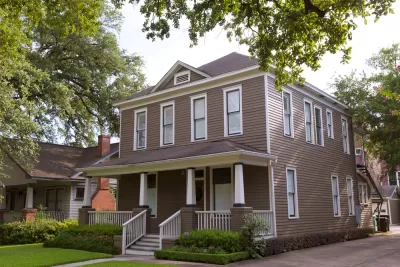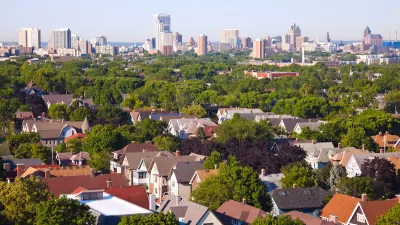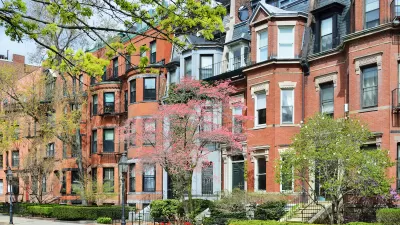By designating that "family" refer to a specific set of ties, many zoning codes make it difficult for "functional" families without those ties to find a place to live.

"Today, when courts ask 'what makes a family?' they often look beyond blood, marriage, and adoption to see if people have made other meaningful, familial commitments that qualify for the obligations and benefits that family law provides," writes Kate Redburn. In many cases of family law, cohabitation can be an important part, "if not the determining factor," in deciding whether a given group of people constitutes a family.
Redburn argues that many local zoning provisions discriminate against "functional" families in favor of "formal" ones by setting strict limits on the number of "unrelated" people who can co-habitate in certain kinds of housing.
The 1974 Supreme Court case Village of Belle Terre v. Boraas gave the nod to that practice by ruling that municipalities can differentiate between related and unrelated families. But Redburn traces the origins of the problem to the mid-1960s, when "fears of the family in crisis" led more localities to zone in favor of formal nuclear families. That practice coincided in many cases with formalized neighborhood segregation and the growing preponderance of single-family zoning.
"By uncoupling the definition of family from residential limits, all kinds of chosen families—foster families, communes, students, seniors, and group homes—would be able to live together legally," Redburn writes.
FULL STORY: Why Are Zoning Laws Defining What Constitutes a Family?

Trump Administration Could Effectively End Housing Voucher Program
Federal officials are eyeing major cuts to the Section 8 program that helps millions of low-income households pay rent.

Planetizen Federal Action Tracker
A weekly monitor of how Trump’s orders and actions are impacting planners and planning in America.

Ken Jennings Launches Transit Web Series
The Jeopardy champ wants you to ride public transit.

California Invests Additional $5M in Electric School Buses
The state wants to electrify all of its school bus fleets by 2035.

Austin Launches $2M Homelessness Prevention Fund
A new grant program from the city’s Homeless Strategy Office will fund rental assistance and supportive services.

Alabama School Forestry Initiative Brings Trees to Schoolyards
Trees can improve physical and mental health for students and commnity members.
Urban Design for Planners 1: Software Tools
This six-course series explores essential urban design concepts using open source software and equips planners with the tools they need to participate fully in the urban design process.
Planning for Universal Design
Learn the tools for implementing Universal Design in planning regulations.
Ada County Highway District
Clanton & Associates, Inc.
Jessamine County Fiscal Court
Institute for Housing and Urban Development Studies (IHS)
City of Grandview
Harvard GSD Executive Education
Toledo-Lucas County Plan Commissions
Salt Lake City
NYU Wagner Graduate School of Public Service





























